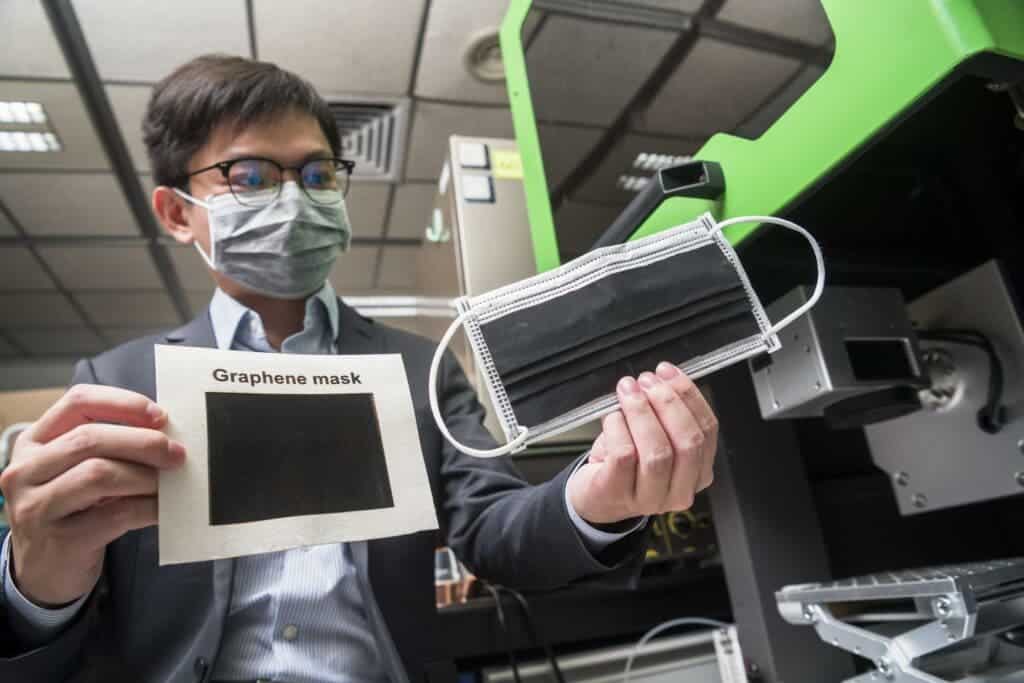A group of researchers from City University of Hong Kong successfully produced laser-induced graphene face masks with an anti-bacterial efficiency of 80%, which can be improved to almost 100% within 10 minutes under sunlight. It has already been tested on two strains of coronavirus with positive results.

Amid the pandemic, face masks have become an important tool to prevent the spread of the COVID-19. Nevertheless, the commonly used masks aren’t anti-bacterial, which can increase the risk of secondary transmission if the masks are discarded improperly or if people touch the contaminated surfaces of the used masks.
Dr. Ye Ruquan from City University of Hong Kong recently developed an easy way to produce graphene, a material known for its anti-bacterial properties. That’s why right after the outbreak of the novel coronavirus he decided to explore the possibility of applying his technique to produce graphene masks at the university.
Alongside his research team, Ye tested the graphene with the E. coli bacteria, achieving an anti-bacterial efficiency of more than 80%. The activated carbon fiber and melt-blown fabrics, two materials that are commonly used in face masks, only have a 2% and 9% efficiency, respectively, showing the large potential of graphene.
Over 90% of the E. coli deposited on carbon fiber and melt-blown fabrics stayed alive after eight hours, while most of the bacteria deposited on the graphene were dead after eight hours. The graphene also showed a larger anti-bacterial capacity for aerosolized bacteria, according to the results of the experiment.
While more research is needed to understand the mechanism behind the bacteria-killing property of the graphene, the researchers believe that it could be related to the graphene’s sharp edge that damages the membranes of the bacterial cells. The bacteria could also be killed by dehydration caused by the water-repelling property of the graphene.
The team also performed experiments to test whether graphene’s capacity to produce heat after absorbing light would enhance its anti-bacterial effect. The results showed that the anti-bacterial efficiency of the graphene could reach almost 100% after 10 minutes of exposure to the sunlight.
Following the initial results, the researchers are now working with a laboratory in China to test the graphene against two species of coronaviruses. The initial tests showed that the material inactivated 90% of the virus in five minutes and 100% in 10 minutes of sunlight.
“Laser-induced graphene masks are reusable. If biomaterials are used for producing graphene, it can help to resolve the problem of sourcing raw material for masks. And it can lessen the environmental impact caused by the non-biodegradable disposable masks,” said Ye in a statement.
The study was published in the journal ACS Nano.









